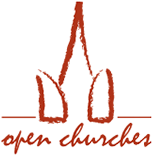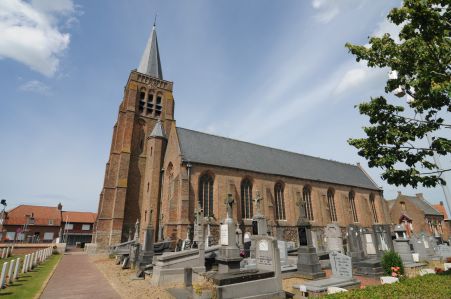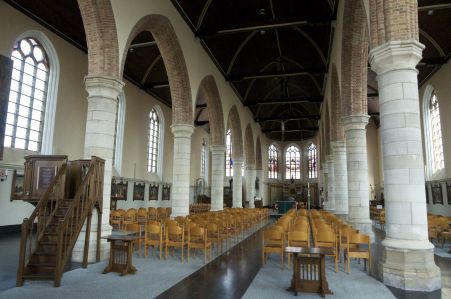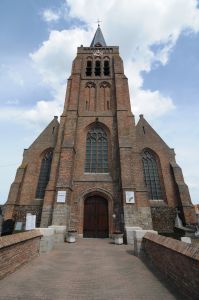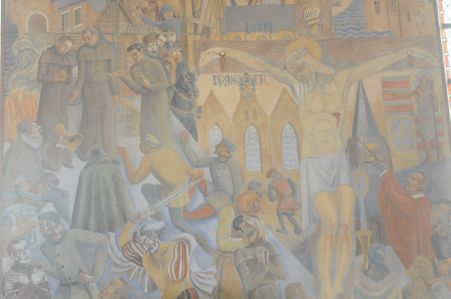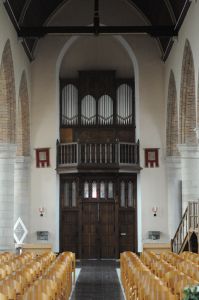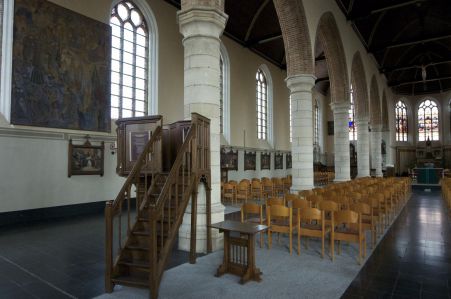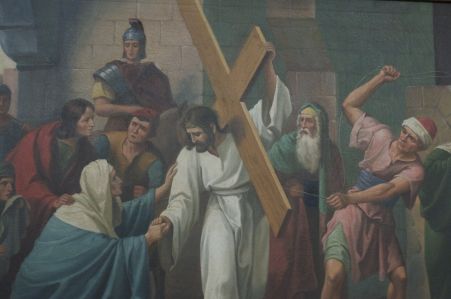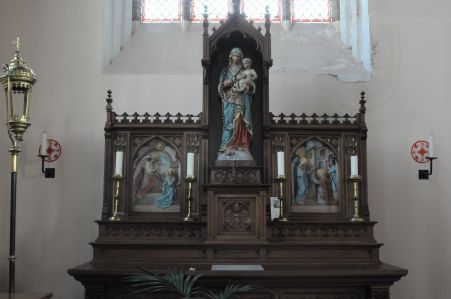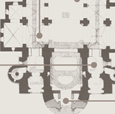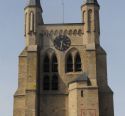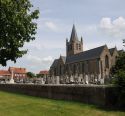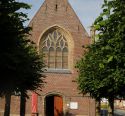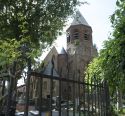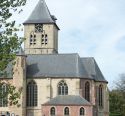Church | XX | Neogothic | Catholic Church



Map
Opening hours
01 January - 31 December
Mon 9.00 - 18.00
Tue 9.00 - 18.00
Wed 9.00 - 18.00
Thu 9.00 - 18.00
Fri 9.00 - 18.00
Sat 9.00 - 18.00
Sun 9.00 - 18.00
Religious offices
Description
The original Romanesque church was completely altered in the 16th century but was then burnt by French invaders in 1794. In 1908 a church hall and west tower were built in late Gothic style. Unfortunately this church was destroyed during the 1914- 18 war. It was then rebuilt a little hastily in 1922-23 in red brick with a base in ferruginous sandstone and a square tower with a hexagonal spire. It was renovated in 1973.
Inside, the walls are white and the barrel vault in wood. Furnishings are neo-gothic. 17th and 19th century paintings include “the murder of the three priests” and “Our Lady with Child” , wreathed in flowers.
In the village are two monuments commemorating three priests killed in 1568.
Photos
Remarkable elements
Our Holy Virgin in rosary
Our Holy Lady with Child in a garland. Our Holy Virgin is surrounded by the fifteen secrets of the rosary. The painting in oil paint from an unknown artist was made around 1600-1650. It measures 120 cm by 100 cm and can be seen in the front of the left side aisle.
Our Holy Lady with child
Our Holy Lady with child gifts the rosary to the H. Dominicus. This painting, also from an unknown artist, can be dated around 1800-1900. The oil painting has a height of 150 cm and a width of 100 cm. It can be seen in the front of the left side aisle.
Tower clockwork
The clockwork in the tower was renewed in 2009 by the Clock-o-matic firm. It is made out of four red dials made out of PVC and with lighting. The massive clock arrows and roman numbers with gilded rings are gold-plated.
Main- and side altar
The altarpiece of the main choir symbolizes the Holy Communion. Next to the central tabernacle are two copper engravings depicting eucharistian scenes. The neogothic side altar in the southern nave is dedicated to Johan the Baptist. The statue has a central place and is carrying a lamb. The pennant that hangs from the crosier has a Latin text saying: ‘I am the lamb of God’. The door of the tabernacle is decorated with a chalice and communion wafer. Two half reliefs depict the baptizing of Christ in the Jordan and the decapitation of Johannes. The altar dates back to May 1924 and was made by Billaux Grosse from Brussels.
Furniture
Pulpit, confession and choir screen are made in the neogothic style. The Calvary is made out of painted scenes. The stained glass windows from Deloddere from Bruges show Biblical scenes: The Last Supper, Zachary wrote ‘Johan is his name’, homage to the Queen of the rosary.
Murder on a priest
The big canvas is made by E.P. Soenen, a member of the Congregation of the unstained heart of Mary, from the district Zwarte Molen (black mill). In a modern style it tells the story of different episodes and events during the religions strifes: the murder on three priests in 1568. It also glorifies the martyrs. On every third Sunday of September a pilgrimage and a H. mass at the cross of the Black Mill remembers these events.
